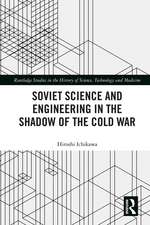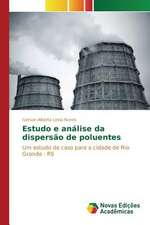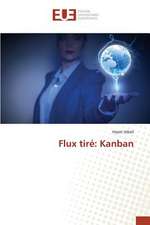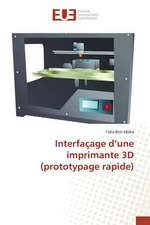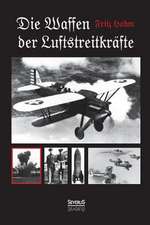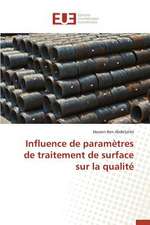The Pioneering Photographic Work of Hercule Florence: Routledge History of Photography
Autor Boris Kossoyen Limba Engleză Hardback – 15 dec 2017
| Toate formatele și edițiile | Preț | Express |
|---|---|---|
| Paperback (1) | 259.51 lei 6-8 săpt. | |
| Taylor & Francis – 30 sep 2020 | 259.51 lei 6-8 săpt. | |
| Hardback (1) | 850.19 lei 6-8 săpt. | |
| Taylor & Francis – 15 dec 2017 | 850.19 lei 6-8 săpt. |
Din seria Routledge History of Photography
-
 Preț: 311.37 lei
Preț: 311.37 lei - 9%
 Preț: 1037.97 lei
Preț: 1037.97 lei -
 Preț: 312.54 lei
Preț: 312.54 lei -
 Preț: 314.34 lei
Preț: 314.34 lei -
 Preț: 312.34 lei
Preț: 312.34 lei -
 Preț: 311.03 lei
Preț: 311.03 lei -
 Preț: 304.08 lei
Preț: 304.08 lei -
 Preț: 296.21 lei
Preț: 296.21 lei -
 Preț: 295.68 lei
Preț: 295.68 lei - 17%
 Preț: 259.51 lei
Preț: 259.51 lei - 19%
 Preț: 246.84 lei
Preț: 246.84 lei -
 Preț: 325.12 lei
Preț: 325.12 lei - 26%
 Preț: 850.73 lei
Preț: 850.73 lei - 16%
 Preț: 261.33 lei
Preț: 261.33 lei - 17%
 Preț: 259.90 lei
Preț: 259.90 lei - 15%
 Preț: 267.41 lei
Preț: 267.41 lei - 25%
 Preț: 766.49 lei
Preț: 766.49 lei - 16%
 Preț: 249.15 lei
Preț: 249.15 lei - 15%
 Preț: 258.97 lei
Preț: 258.97 lei -
 Preț: 311.41 lei
Preț: 311.41 lei - 16%
 Preț: 260.54 lei
Preț: 260.54 lei - 18%
 Preț: 237.47 lei
Preț: 237.47 lei - 25%
 Preț: 713.72 lei
Preț: 713.72 lei - 30%
 Preț: 794.48 lei
Preț: 794.48 lei - 30%
 Preț: 776.19 lei
Preț: 776.19 lei -
 Preț: 326.62 lei
Preț: 326.62 lei - 17%
 Preț: 257.03 lei
Preț: 257.03 lei - 16%
 Preț: 260.16 lei
Preț: 260.16 lei - 18%
 Preț: 948.69 lei
Preț: 948.69 lei
Preț: 850.19 lei
Preț vechi: 1141.89 lei
-26% Nou
Puncte Express: 1275
Preț estimativ în valută:
162.68€ • 169.52$ • 134.70£
162.68€ • 169.52$ • 134.70£
Carte tipărită la comandă
Livrare economică 03-17 aprilie
Preluare comenzi: 021 569.72.76
Specificații
ISBN-13: 9781138204669
ISBN-10: 1138204668
Pagini: 232
Ilustrații: 12 Halftones, color; 45 Halftones, black and white; 45 Illustrations, black and white
Dimensiuni: 174 x 246 x 19 mm
Greutate: 1.27 kg
Ediția:1
Editura: Taylor & Francis
Colecția Routledge
Seria Routledge History of Photography
Locul publicării:Oxford, United Kingdom
ISBN-10: 1138204668
Pagini: 232
Ilustrații: 12 Halftones, color; 45 Halftones, black and white; 45 Illustrations, black and white
Dimensiuni: 174 x 246 x 19 mm
Greutate: 1.27 kg
Ediția:1
Editura: Taylor & Francis
Colecția Routledge
Seria Routledge History of Photography
Locul publicării:Oxford, United Kingdom
Public țintă
Postgraduate and UndergraduateCuprins
Preface
Introduction
Part I: The Brazil of Hercule Florence
1. Brazil at the beginning of the 19th century
2. The inventor’s youth
3. His arrival to Brazil
4. The Langsdorff Expedition
5. Vila de São Carlos
6. First researches and discoveries
7. Campinas’ first typography. The periodical O Paulista
8. From the pictorial representation to the Salle Obscure
9. Hercule Florence’s other activities after 1839
Part II: Photography
10. Rediscovering the world
11. Europe in the 18th century
Knowledge in optics: the camera obscura
The contribution of chemistry
12. The multiple inventions of Photography
13. The announcement in Brazil of Daguerre’s discovery
14. References to Florence’s Discovery by various authors
15. References registered by Florence about his discovery
Part III: Replication and Confirmation of Florence’s Discovery
16. Critical examination of the sources: Methodology
17. Written sources
Description of the physical characteristics and content of the diaries
Analysis of the texts related to photography included in the diaries
First notes
The use of the câmera obscura. Sensitizing paper with silver nitrate
"Printing" by means of sunlight
Preparing the matrix or "negative" preparation. Materials and techniques
Sensitizing surfaces. Chemical substances. Materials and techniques
Printing plates
Searching for a fixing agent. Experimentations with urine. The use of ammonia. Other references.
International primacy in the use of the term photographie
18. Iconographic Sources
Physical characteristics and content of the sources. Description and analysis.
19. Other Sources
20. Florence’s statements to the Brazilian press
21. Chemical confirmation of Hercule Florence’s experiments
Afterword
Annexes
Hercule Florence’s Notes Related to Photography
Livre d’annotations et de premiers matériaux
2ème livre de premiers matériaux
L’ami des arts livré à lui-même
3ème livre de premiers matériaux
L’inventeur au Brésil – Correspondance et pièces scientifiques
Introduction
Part I: The Brazil of Hercule Florence
1. Brazil at the beginning of the 19th century
2. The inventor’s youth
3. His arrival to Brazil
4. The Langsdorff Expedition
5. Vila de São Carlos
6. First researches and discoveries
7. Campinas’ first typography. The periodical O Paulista
8. From the pictorial representation to the Salle Obscure
9. Hercule Florence’s other activities after 1839
Part II: Photography
10. Rediscovering the world
11. Europe in the 18th century
Knowledge in optics: the camera obscura
The contribution of chemistry
12. The multiple inventions of Photography
13. The announcement in Brazil of Daguerre’s discovery
14. References to Florence’s Discovery by various authors
15. References registered by Florence about his discovery
Part III: Replication and Confirmation of Florence’s Discovery
16. Critical examination of the sources: Methodology
17. Written sources
Description of the physical characteristics and content of the diaries
Analysis of the texts related to photography included in the diaries
First notes
The use of the câmera obscura. Sensitizing paper with silver nitrate
"Printing" by means of sunlight
Preparing the matrix or "negative" preparation. Materials and techniques
Sensitizing surfaces. Chemical substances. Materials and techniques
Printing plates
Searching for a fixing agent. Experimentations with urine. The use of ammonia. Other references.
International primacy in the use of the term photographie
18. Iconographic Sources
Physical characteristics and content of the sources. Description and analysis.
19. Other Sources
20. Florence’s statements to the Brazilian press
21. Chemical confirmation of Hercule Florence’s experiments
Afterword
Annexes
Hercule Florence’s Notes Related to Photography
Livre d’annotations et de premiers matériaux
2ème livre de premiers matériaux
L’ami des arts livré à lui-même
3ème livre de premiers matériaux
L’inventeur au Brésil – Correspondance et pièces scientifiques
Notă biografică
Boris Kossoy is Professor in the School of Communication and Arts at the University of São Paulo, Brazil.
Descriere
This book delivers an in-depth analysis of Hercules Florence, who is virtually unknown despite being among the world’s photographic pioneers.

